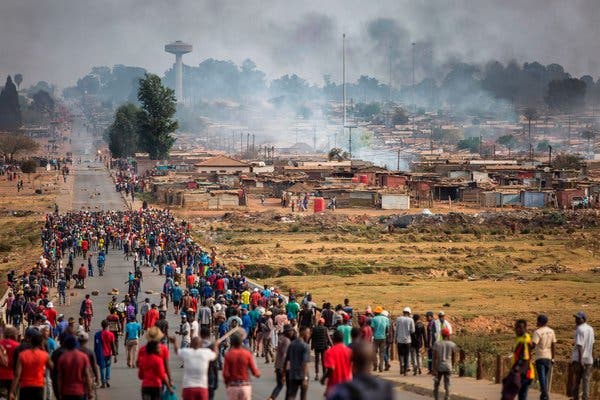
Once again, this September, xenophobic violence was unleashed on other Africans, mostly Nigerians, in South Africa: businesses were closed, shops were looted, and people were killed. The attacks, which previously happened in 2008 and 2015 and also targeted Zimbabweans, Mozambicans, and Malawians, among other nationals, have drawn widespread international condemnation and, in cases, diplomatic actions. Prominent among the condemnation by writers is the Mozambican novelist Mia Couto’s open letter. Meanwhile, attempts to understand why—analyses of poverty, unemployment, high crime rates, police corruption, poor service delivery, the unbalanced political settlement since the end of Apartheid—have been offered.
However, as Africa Is a Country founder Sean Jacobs noted in 2015, “this is a postcolonial problem.” Recall, he writes, “the mass expulsions between Nigeria and Ghana of emigrants from both countries in the 1980s, Uganda’s ejection of Asians, the struggle over Ivoirite that broke Cote d’Ivoire apart for a while or the way the Kenyan state has mistreated its Somali citizens since independence. The specifics in South Africa may be different, but the ways in which we respond follow a same pattern.”
We bring you 15 essays and reports to guide your understanding of xenophobia in South Africa and Africa.
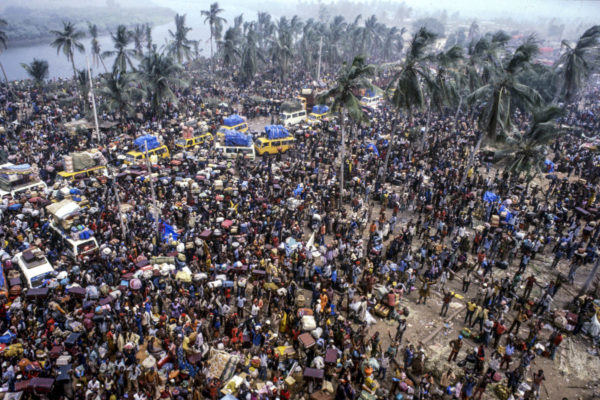
No Place Like Home, by Khadija Patel and Azad Essa, in Aljazeera (2015)
A wide-ranging special report, with photography by Ihsaan Haffejee, that details how “small convenience stores in the townships is a dangerous business for foreigners,” who have been “accused of spreading disease, stealing jobs and sponging off basic government services like electricity, running water and healthcare,” while “the South African government insists that criminality is behind [the violence], not xenophobia.” The five parts—“The Foreigners,” “The History,” “The Mob,” “The Officials,” and “The Activists”—focus on the vantages of key parties.
Belonging: Why South Africans Refuse to Let Africa In, by Sisonke Msimang, in Africa Is a Country (2014)
A look at the average South African psyche’s perception and understanding of “Africa”—its insisted difference from it, its condescending fear of potential connection to it—which is the one thing that “most black and white South Africans have. . . in common: their hatred of other Africans coming from the rest of the continent.”
Explaining South African Xenophobia, by Christopher Claassen, in Afrobarometer (2017)
In how it “investigates the determinants of South African xenophobia,” this academic paper posits that “the problem is not a scarcity of explanations, but an overabundance,” and shines a light on the social processes behind the violences of 2008 and 2015.
Ghana Must Go: The Ugly History of Africa’s Most Famous Bag, by Shola Lawal, in Mail & Guardian on Atavist
In 1969, Ghanaian prime minister Kofi Busia deported 2.5 million undocumented African immigrants, most of whom were Nigerians. In 1983, Nigeria’s president Shehu Shagari expelled more than one million Ghanaians and other West African nationals from his country. In 1985, Nigeria’s head of state Muhammadu Buhari expelled another 700,000 Ghanaians. This essay revisits these tragedies that popularized a bag.
Xenophobia and Party Politics in South Africa, by Savo Heleta, in Africa Is a Country (2018)
An observation of how, contrary to statistics, South African politicians claim a “take over” by immigrants and capitalize on such sentiments for potential gain in the 2019 elections.
Xenophobia: The View from Mozambique, by Justin Pearce, in Daily Maverick (2015)
From an evaluation of both countries’ intellectual and political cultures, a consideration of the mutual stereotyping that Mozambicans and South Africans employ for each other in the thick of news of the 2015 violence in South Africa.
The Warm Up, by Kwanele Sosibo, in Chimurenga Chronic (2013)
A journalistic report and timeline of the struggle of Mozambicans, for communal safety and property preservation, in the thick of xenophobic violence in Atteridgeville, South Africa, from March to May 2008.
Failed Decolonisation of South African Cities Fuels Violence, by Nanjala Nyabola, in Aljazeera (2019)
This think piece links the violence in South Africa’s central business districts (CBD) to the country’s “failure to address the urban legacy of apartheid.” This ensures that “foreigners occupying the vacuum created by the retreat of the state become the focus of violence because they are portrayed as having interrupted the black succession of a prosperous CBD and having caused the deterioration of the space.” For black South Africans, “the argument goes that [their] exclusion from the CBD was supposed to have ended after the fall of apartheid; instead a new type of foreigner is standing in between the attackers and that fantasy.”
The Everyday Lives of African Immigrants in South Africa, by Leila Dee Dougan, in Africa Is a Country (2014)
A brief consideration of the photographer Sydelle Willow Smith’s exhibition series Soft Walls, an “attempt to challenge visual stereotypes” of African immigrants living in South Africa who have “previously been portrayed through images of violence, deportation and police brutality”—one which “offers space for a different conversation about the experience of being foreign.”
Ethnic Cleansing Sure to Follow Xenophobia, by Fred Khumalo, in Business Live (2015)
A warning about a potential ethnic cleansing that could follow once space has been cleared by the success of xenophobia in South Africa.
Lesotho Media and the Growing Intimidation of Chinese Shop Owners, by Ts’eliso Monaheng, in Africa Is a Country (2013)
A brief look at the involvement of the Lesotho media in stoking sentiments which might have encouraged the closure of Chinese-owned shops “known to sell less-than-appealing food to their Basotho customers for years, most of which are not well-to-do and hence cannot afford to buy groceries from elsewhere.”
On Patrol in the Dark City, by Loren Landau and Tanya Pampalone, in The Johannesburg Review of Books (2018)
This excerpt from I Want to Go Home Forever: Stories of Becoming and Belonging in South Africa’s Great Metropolis features profiles of citizens observing and interpreting the world around them, one in which xenophobia thrives.
Why Are South Africa’s Middle Classes Not Mobilizing Against Xenophobia?, by Surren Pillay, in Africa Is a Country (2010)
A questioning of the pattern of responses against xenophobic violence, by the mostly white South African middle class, that is not “accompanied by a political struggle against the structural violence that places vulnerable people in vulnerable situations, and leads them to do awful things to each other sometimes, locked together as they are in this cheek by jowl poverty.”
Unthinkable Nigeriana: The Social Imaginary of District 9, by Ato Quayson, in Johannesburg Workshop in Theory and Criticism (2009)
Using the largely dented “Nigerian character” and the country’s consequent historicity as a point of departure, this critique queries the sci-fi documentary film District 9‘s “deeply unsettling representation of its Nigerian characters” “as profiteering gangsters” and “cannibals,” establishing how its social imaginary—that portrayal of social relations around power—“is representing an image of Nigeria that is also true of what the country is in the popular imagination, and which has been contributed to, willy-nilly, by Nigerians themselves.”
About Xenophobic South Africa, by Achille Mbembe, in Africa Is a Country (2015)
A reflection on why South Africa is “turning into a killing field for non-national Africans (to whom we have to add the Bengalis, Pakistanis),” why it has “historically represented a ‘circle of death’ for anything and anybody ‘African,’” and whether the term “Africa” in its name means “an idea, or simply a geographical accident.” These and the “chains of complicity” that allow it.
With thanks to Sisonke Msimang for some recommendations.
This feature will continuously be updated to include more suggestions. For those, please email us at [email protected].




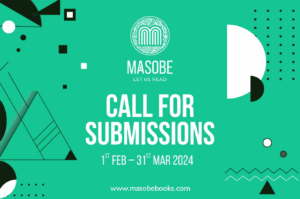
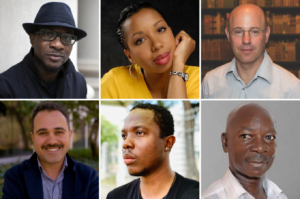
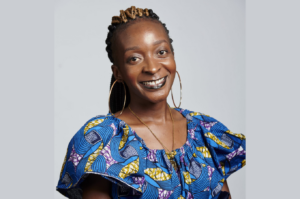
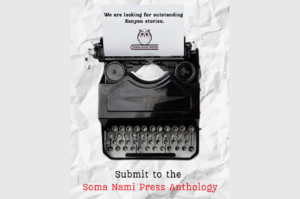

COMMENTS -
Reader Interactions